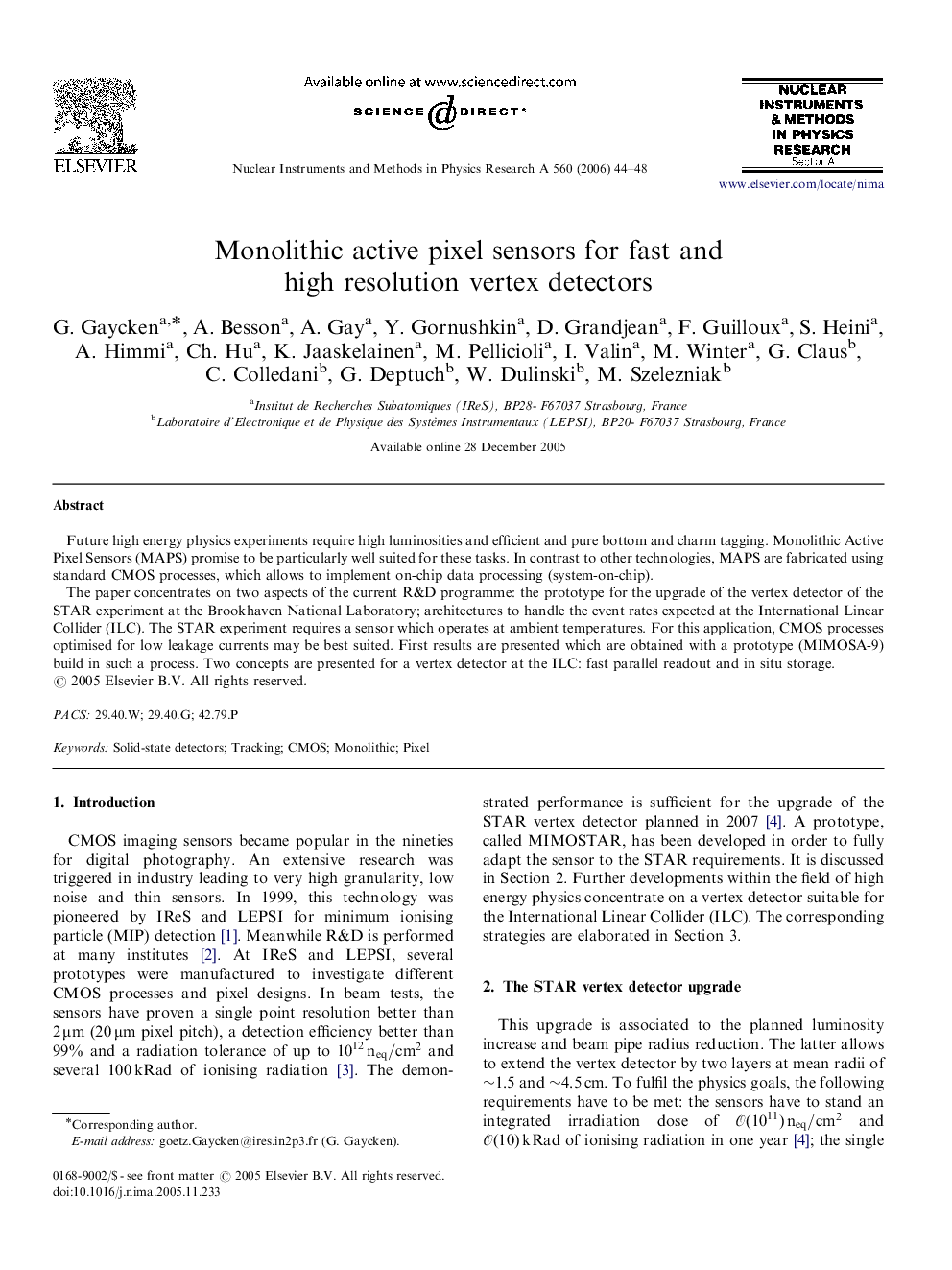| Article ID | Journal | Published Year | Pages | File Type |
|---|---|---|---|---|
| 1833370 | Nuclear Instruments and Methods in Physics Research Section A: Accelerators, Spectrometers, Detectors and Associated Equipment | 2006 | 5 Pages |
Future high energy physics experiments require high luminosities and efficient and pure bottom and charm tagging. Monolithic Active Pixel Sensors (MAPS) promise to be particularly well suited for these tasks. In contrast to other technologies, MAPS are fabricated using standard CMOS processes, which allows to implement on-chip data processing (system-on-chip).The paper concentrates on two aspects of the current R&D programme: the prototype for the upgrade of the vertex detector of the STAR experiment at the Brookhaven National Laboratory; architectures to handle the event rates expected at the International Linear Collider (ILC). The STAR experiment requires a sensor which operates at ambient temperatures. For this application, CMOS processes optimised for low leakage currents may be best suited. First results are presented which are obtained with a prototype (MIMOSA-9) build in such a process. Two concepts are presented for a vertex detector at the ILC: fast parallel readout and in situ storage.
